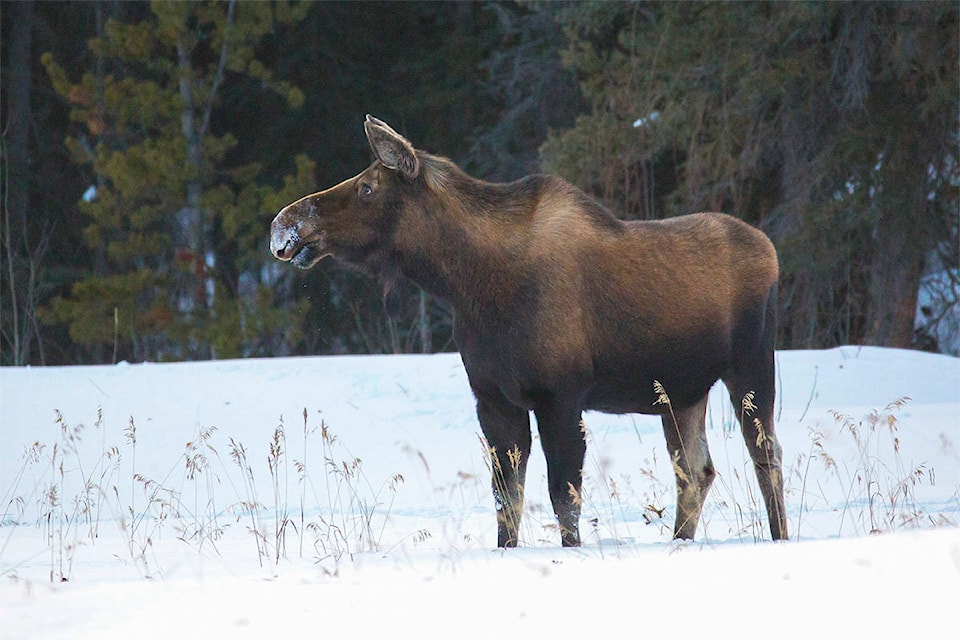A new Arctic animal database tracking the movement of 86 species over nearly 30 years is offering researchers valuable insight into the impact of climate change on the behaviours of creatures across the North.
The Arctic Animal Movement Archive, or AAMA, was highlighted in a paper published in the Science journal on Nov. 5, “Ecological insights from three decades of animal movement tracking across a changing Arctic.”
More than 150 authors contributed to the paper, which describes the AAMA as a growing collection of 200-plus standardized terrestrial and marine animal tracking studies dating back to 1991.
“The Arctic and adjacent regions are experiencing the most rapid climate and environmental changes on Earth, caused primarily by anthropogenic greenhouse gas emissions,” the paper says.
“… These changes profoundly affect conditions experienced by animals, including food availability, interspecific competition, predation, and increased human disturbances.
“… Documenting and understanding these changes requires multidecadal, pan-Arctic data at multiple trophic levels.”
Using the data from multiple studies contained in the AAMA, researchers were able to identify three trends — golden eagles are now arriving earlier at their summering grounds; northern mountain caribou, northern boreal caribou and barren-ground caribou are giving birth earlier, while southern boreal and southern mountain caribou appear mostly unaffected; and black bears, grizzly bears, wolves, caribou and moose all responded differently to temperature and precipitation changes.
The AAMA allowed researchers to look at the tracking data on 103 northward-migrating golden eagles between 1993 to 2017 to compare the times they arrived at their summer breeding grounds. They found that the mean summering date decreased by half a day every year over 25 years, with adults arriving earliest, followed by subadults and then juveniles. Winter climate appeared to have a different impact on different age classes, suggesting that the species “could face age-specific challenges during migration and at their warming Arctic summering grounds.”
The caribou findings, meanwhile, used data from 2000 to 2017. Although barren-ground caribou and northern caribou occupy roughly the same latitudinal range, the former calved later, researchers found. As well, barren-ground and northern woodland caribou but not southern woodland caribou, exhibited a significant trend towards earlier calving, from between 0.4 to 1.1 days per year.
“This is the first continental-scale retrospective evidence of potential adaptive responses to climate trends by caribou,” the paper says.
Finally, researchers looked at the effects of temperature and precipitation on the seasonal movements of two herbivore and three predator species, using records from 1,720 animals collected between 1998 to 2019.
“Animals conserve energy by modifying their behavior in response to weather conditions, with important implications for individual fitness and species resilience under climate change,” the paper says.
Black bears, grizzly bears, wolves, moose and caribou all showed lower movement rates during the winter compared to the summer, researchers found. As the summers warmed, wolves and black bears slowed their movement rates, while moose increased theirs. In the winter, only barren-ground caribou increased their movement rates as temperatures increased, and while snow impeded wolves, boreal caribou and moose, all species were “generally insensitive to summer precipitation.”
“These patterns may reflect asynchronous responses to climate change within and across trophic levels,” the paper says. “Climate-driven variation in animal activity is likely to affect species interactions, altering energy expenditure, encounter rates, and foraging success with demographic implications for both predators and prey.”
“As we demonstrate, the AAMA provides a solution to Arctic data collection and sharing challenges,” the paper concludes.
“It serves as a critical baseline and resource to identify early signals of local or large-scale changes in animal distribution, movement responses, and adaptive traits… Key drivers of population responses, such as migration, parturition, and foraging movement, are undergoing rapid changes, suggesting that climate change is affecting animals in ways that will shape the future of the Arctic.”
Contact Jackie Hong at jackie.hong@yukon-news.com
